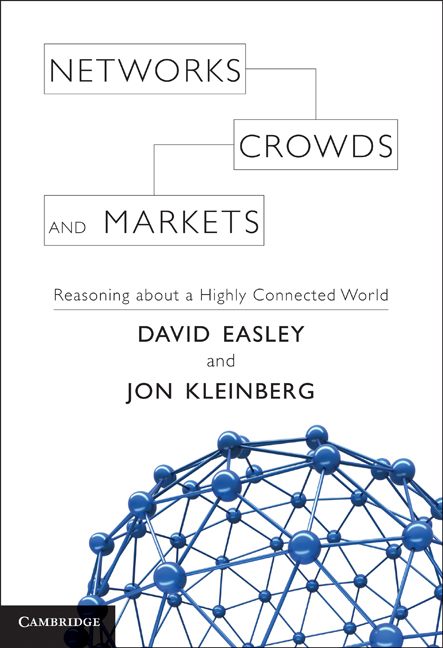Clay Shirky: Cognitive Surplus: Creativity and Generosity in a Connected Age (2010)
Filed under book | Tags: · creativity, internet, mass media, technology, web 2.0

The author of the breakout hit Here Comes Everybody reveals how new technology is changing us from consumers to collaborators, unleashing a torrent of creative production that will transform our world.
For decades, technology encouraged people to squander their time and intellect as passive consumers. Today, tech has finally caught up with human potential. In Cognitive Surplus, Internet guru Clay Shirky forecasts the thrilling changes we will all enjoy as new digital technology puts our untapped resources of talent and goodwill to use at last.
Since we Americans were suburbanized and educated by the postwar boom, we’ve had a surfeit of intellect, energy, and time-what Shirky calls a cognitive surplus. But this abundance had little impact on the common good because television consumed the lion’s share of it-and we consume TV passively, in isolation from one another. Now, for the first time, people are embracing new media that allow us to pool our efforts at vanishingly low cost. The results of this aggregated effort range from mind expanding-reference tools like Wikipedia-to lifesaving-such as Ushahidi.com, which has allowed Kenyans to sidestep government censorship and report on acts of violence in real time.
Shirky argues persuasively that this cognitive surplus-rather than being some strange new departure from normal behavior-actually returns our society to forms of collaboration that were natural to us up through the early twentieth century. He also charts the vast effects that our cognitive surplus- aided by new technologies-will have on twenty-first-century society, and how we can best exploit those effects. Shirky envisions an era of lower creative quality on average but greater innovation, an increase in transparency in all areas of society, and a dramatic rise in productivity that will transform our civilization.
The potential impact of cognitive surplus is enormous. As Shirky points out, Wikipedia was built out of roughly 1 percent of the man-hours that Americans spend watching TV every year. Wikipedia and other current products of cognitive surplus are only the iceberg’s tip. Shirky shows how society and our daily lives will be improved dramatically as we learn to exploit our goodwill and free time like never before.
Publisher Penguin Press, 2010
ISBN 1594202532, 9781594202537
242 pages
review (Jonathan V Last, The Weekly Standard)
PDF (EPUB)
Comment (0)David Easley, Jon Kleinberg: Networks, Crowds, and Markets: Reasoning About a Highly Connected World (2010)
Filed under book | Tags: · game theory, graph theory, intellectual property, mathematics, networks, web 2.0

Are all film stars linked to Kevin Bacon? Why do the stock markets rise and fall sharply on the strength of a vague rumour? How does gossip spread so quickly? Are we all related through six degrees of separation? There is a growing awareness of the complex networks that pervade modern society. We see them in the rapid growth of the Internet, the ease of global communication, the swift spread of news and information, and in the way epidemics and financial crises develop with startling speed and intensity. This introductory book on the new science of networks takes an interdisciplinary approach, using economics, sociology, computing, information science and applied mathematics to address fundamental questions about the links that connect us, and the ways that our decisions can have consequences for others.
Publisher Cambridge University Press, 2010
ISBN 0521195330, 9780521195331
736 pages
Constant (eds.): Tracks in Electr(on)ic Fields (2009) [English/French/Dutch]
Filed under book | Tags: · design, floss, graphic design, internet, online video, open source, privacy, software, surveillance, web 2.0

Publication contains texts and images from Verbindingen/Jonctions 10: Tracks in electr(on)ic fields festival, organised by Constant VZW in Brussels in 2007. Its design by OSPublish won a 2009 Fernand Baudin prize.
Edited by Constant featuring Clementine Delahaut, Laurence Rassel and Emma Sidgwick
Publisher Constant, Association for Art and Media, Brussels, 2009
Free Art Licence
332 pages
PDF, PDF (74 MB)
Source files

